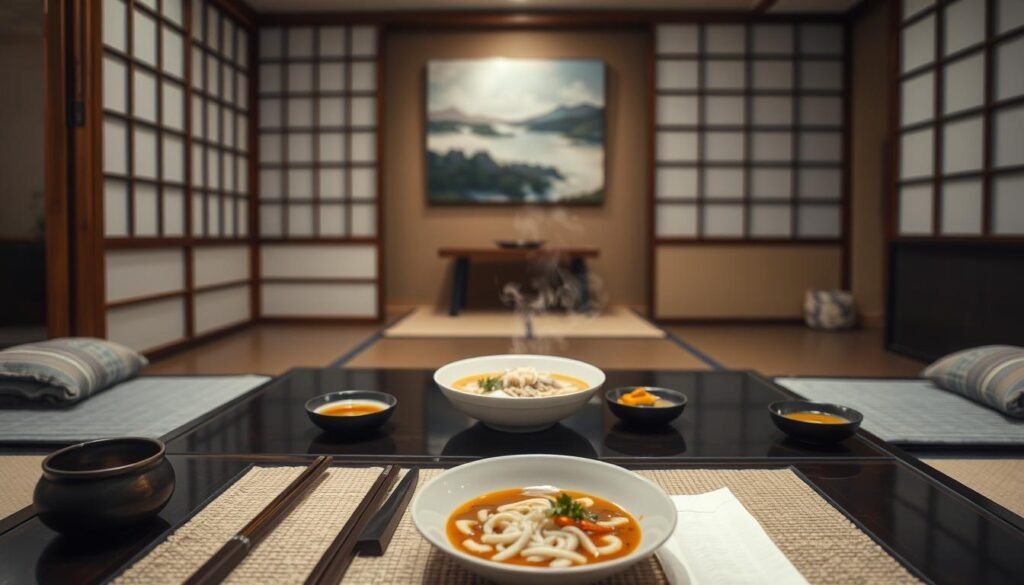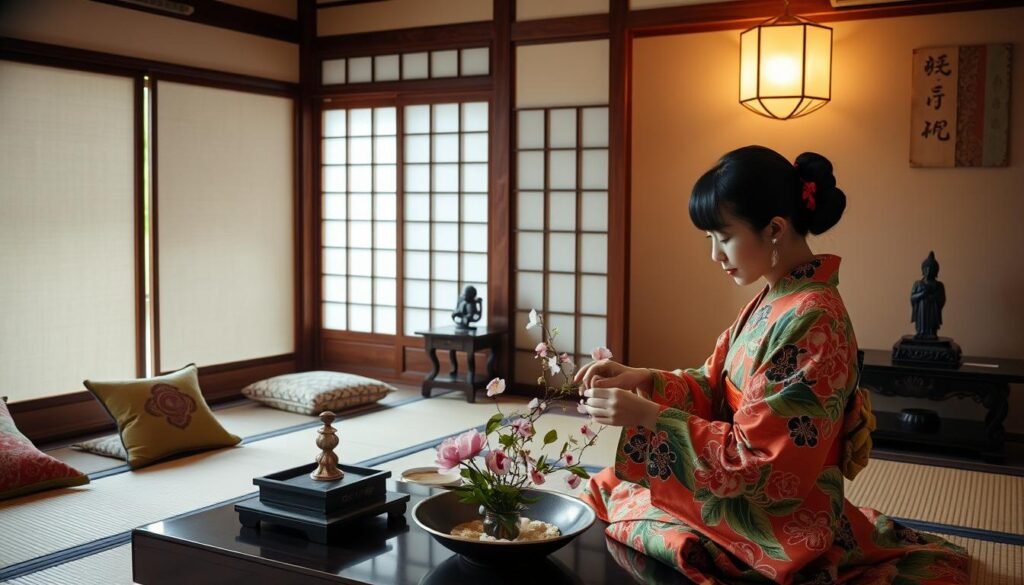Japan, a land of rich traditions and precise manners, offers travelers a unique experience. While the Japanese are known for their impeccable behavior, visitors often find themselves navigating a complex web of unwritten rules. Understanding these customs is crucial to making the most of your trip and leaving a positive impression.
Thank you for reading this post, don’t forget to subscribe!From proper greetings to respectful behavior in public, mastering these practices enhances your journey. Simple misunderstandings can easily be avoided with some preparation. This guide will walk you through 17 essential sections, covering everything from dining etiquette to appropriate attire.
In Japan, punctuality and respect are deeply valued. Arriving on time and showing gratitude are small actions that make a big difference. Whether you’re interacting with locals or exploring historical sites, being mindful of cultural norms ensures a more enjoyable and respectful experience.
Key Takeaways
- Understanding local customs enhances your travel experience in Japan.
- Simple preparations can prevent common cultural misunderstandings.
- Respectful behavior and punctuality are highly valued.
- Learning about Japanese service culture improves interactions.
- This guide covers 17 essential etiquette topics for travelers.
Introduction to Japanese Cultural Etiquette
Understanding the cultural norms of Japan is essential for any traveler. Japanese society thrives on unspoken rules that foster harmony and respect. These customs are deeply rooted in daily life, influencing how people interact and conduct themselves in public.
From bustling cities like Tokyo to quieter rural areas, etiquette plays a vital role. Simple actions, such as the way you greet someone or handle money, can significantly impact how you’re perceived. For instance, using both hands when giving or receiving something is considered polite, while counting change in front of a cashier may be seen as disrespectful.
| Custom | Practice | Significance |
|---|---|---|
| Bowing | Varying depths depending on the situation | Shows respect and humility |
| Removing Shoes | Before entering homes or traditional areas | Maintains cleanliness and tradition |
| Using Chopsticks | Not sticking them upright in rice | Respects funeral traditions |
These practices not only enhance your experience but also show appreciation for the local way of life. By being mindful of these rules, you can navigate Japan with confidence and make meaningful connections with the people you meet.
Cultural etiquette mistakes to avoid in Japan,
Visitors to Japan often unintentionally breach local customs, which can lead to awkward situations. Simple oversights like eating on the go or speaking loudly in public spaces can make a negative impression. Understanding these unwritten rules is key to a harmonious experience.
| Mistake | Consequence |
|---|---|
| Eating while walking | Considered impolite and disruptive |
| Loud conversations on trains | Disturbs the peaceful environment |
| Improper chopstick use | Can offend due to funeral associations |
Even small missteps, like leaving a tip or pointing with chopsticks, can cause misunderstandings. As one traveler noted, “A little awareness goes a long way in showing respect.” Being mindful of these customs ensures a more enjoyable and respectful visit.
Essential Japanese Customs for First-Time Visitors
Understanding the social norms of Japan can make your trip more enjoyable. Simple actions like proper greetings and respect for unspoken rules can significantly improve your experience.
Understanding Social Harmony and Unspoken Rules
Japanese society values harmony and respect. Visitors should align their behavior with these norms to blend in seamlessly. For instance, maintaining a calm demeanor in crowded areas and avoiding loud conversations are considered polite.
One key aspect is the use of chopsticks. Proper etiquette includes not passing food between chopsticks or leaving them standing upright in a bowl of rice, as these actions are associated with funeral rituals. Such mindful behavior shows respect for local traditions.
Respectful Behaviors in Popular Tourist Areas
In busy tourist spots, respect for personal space and orderly conduct is crucial. When dining out, it’s customary to wait for the host to seat you and to not tip, as it’s not expected. These small gestures contribute to a positive experience.
| Custom | Practice | Significance |
|---|---|---|
| Bowing | Varying depths based on the situation | Shows respect and humility |
| Chopstick Etiquette | Not passing food or standing upright | Respects funeral traditions |
| Removing Shoes | Before entering homes or traditional areas | Maintains cleanliness and tradition |
By understanding and following these customs, visitors can navigate Japan with confidence and appreciation, ensuring a memorable and respectful trip.
Navigating Public Transport Etiquette
Public transport in Japan is renowned for its efficiency and orderliness. Maintaining a quiet and respectful environment is crucial, especially on crowded trains where many commuters sleep during their journeys.
Quiet Conversations and Phone Manners
Talking loudly or using your phone on trains can disrupt the peaceful atmosphere. In Japan, such behavior is considered impolite and intrusive. Train stations also have strict rules, such as mandatory silence in certain areas and orderly boarding procedures. These practices ensure smooth operations and reflect respect for fellow passengers.
| Rule | Practice | Significance |
|---|---|---|
| Quiet Conversations | Speak softly; avoid loud talk | Maintains a peaceful environment |
| Phone Manners | Set phone to silent mode | Prevents disturbing others |
| Boarding Etiquette | Line up and wait for passengers to exit | Promotes orderly boarding |
Japan’s transit system is known for its punctuality and high service quality, with noise levels among the lowest worldwide. To blend in, keep your phone on silent and converse quietly if necessary. These small courtesies show respect for local customs and ensure a harmonious travel experience.
Mastering Dining Etiquette and Food Culture
Dining in Japan is an art that blends tradition with respect. Understanding proper table manners is key to a respectful and enjoyable experience.
Proper Table Manners and Eating Practices
Japanese dining etiquette goes beyond just eating. It involves respect for the chef, the food, and fellow diners. One important practice is saying “itadakimasu” before your meal and “gochisousama deshita” afterward. These phrases express gratitude and appreciation.
| Practice | Details |
|---|---|
| Chopstick Etiquette | Avoid rubbing chopsticks together or sticking them upright in rice, as this resembles funeral rituals. |
| Order of Serving | Wait until everyone is served before eating. This shows respect for the group. |
| Conversation Topics | Keep conversations light and avoid controversial subjects during meals. |
In formal restaurants, expectations are higher. For example, it’s customary not to tip, as it’s not expected. In contrast, casual dining spots may be more relaxed. Regardless of the setting, following these guidelines shows respect for the chef and local traditions.

By embracing these customs, visitors can fully appreciate Japan’s rich food culture and create lasting memories.
Chopstick Etiquette and Table Manners
Chopstick etiquette is a cornerstone of dining in Japan, reflecting deep-rooted traditions. Understanding how to use chopsticks correctly is essential for a respectful dining experience.
In both casual and formal settings, chopsticks should be held correctly, with one between the thumb and index finger and the other between the middle finger and palm. This proper grip ensures precise control, allowing you to pick up food gracefully.
Prohibited actions include crossing chopsticks or standing them upright in a bowl, as these resemble funeral customs. Pointing with chopsticks or using them to tap on plates is also considered rude.
Breaking these rules can lead to cultural offense, as they are seen as disrespectful. For instance, standing chopsticks upright in rice, known as “tate-bashi,” is a significant taboo tied to funeral rituals.
When not in use, place chopsticks on a rest or across the top of your bowl. Never stick them into the rice vertically or pass food from one pair to another, as these actions have mournful connotations.
In formal dining, it’s customary to wait for the host to start eating and to not tip, as it’s not expected. In casual settings, these rules are more relaxed, but respect for tradition remains important.
By mastering chopstick etiquette, visitors show respect for their host and fellow diners, ensuring a harmonious and enjoyable meal.
The Do’s and Don’ts for Removing Shoes and Using Slippers
Removing shoes is a cornerstone of Japanese tradition, reflecting respect for cleanliness and order. This practice is deeply ingrained in daily life, from homes to traditional inns. Understanding when and where to remove your shoes is essential for a respectful visit.
The entryway, known as the genkan, is where shoes are typically removed. It’s designed to separate the outdoor and indoor spaces. Place your shoes neatly, facing outward for easy access when you leave. Many homes and establishments provide slippers to wear indoors, ensuring floors remain clean and comfortable.
One key detail is the difference between room slippers and toilet slippers. Room slippers are for general indoor use, while toilet slippers are specifically for the bathroom. Always switch to toilet slippers when using the restroom to maintain hygiene standards.
| Location | Shoe Etiquette | Slipper Use |
|---|---|---|
| Home | Remove shoes at the genkan | Use provided slippers indoors |
| Restaurants | Some require shoe removal | Slippers may be provided |
| Temples | Shoes are usually removed | No slippers; walk in socks |
Observing these customs helps avoid misunderstandings. For instance, wearing bathroom slippers outside the restroom is considered impolite. As a traveler shared, “Noticing these small details makes a big difference in how you’re received.” By following these guidelines, you can navigate Japan’s footwear etiquette with confidence and respect.
Mastering the Art of Bowing in Japan
Bowing is a fundamental aspect of communication in Japan, reflecting respect, gratitude, and humility. It’s a gesture that transcends words, making it essential for visitors to understand its nuances.
Different Bowing Techniques for Varying Situations
- Eschaku (Informal Bow): A slight bow of about 15 degrees, used in casual encounters.
- Keirei (Formal Bow): A deeper bow of 30 degrees, suitable for business meetings or formal events.
- Saikeirei (Deep Bow): The deepest bow at 45 degrees, reserved for apologies or expressing deep respect.
Practical tips for bowing include maintaining good posture and keeping your hands by your sides. In business settings, junior members bow deeper than seniors. For apologies, a deeper bow conveys greater remorse.
In everyday interactions, such as greeting a shop owner, a slight bow is sufficient. In formal situations, like meeting someone of higher status, a deeper bow is appropriate. This practice reinforces respect and adherence to local customs, ensuring harmonious interactions during your stay in Japan.
Respecting Local Customs in Public Spaces
Respecting local customs in public spaces is vital when visiting Japan. These areas are governed by strict rules to maintain a clean and respectful environment. From streets to parks, understanding and adhering to these norms ensures a harmonious experience for both visitors and locals.
Behavior in public spaces is heavily influenced by social norms. On streets and in parks, actions like eating on the go or loud conversations are frowned upon. For instance, eating while walking, known as “tabearuki,” is generally considered impolite, though exceptions exist in tourist areas. Maintaining cleanliness is a national value, so carrying trash until a proper disposal spot is found is common.
| Custom | Practice | Significance |
|---|---|---|
| Proper Behavior on Streets | Avoid eating or loud conversations | Maintains a respectful environment |
| Cleanliness | Carry trash until disposal | Reflects national pride |
| Respect in Crowded Areas | Keep noise levels low | Ensures a peaceful atmosphere |
Following these norms protects local traditions and enhances public life quality. By being mindful of these customs, visitors can enjoy a respectful and memorable experience in Japan.
Mindful Communication and Gestures
Communication in Japan often goes beyond words, with nonverbal cues playing a significant role. Subtle gestures and facial expressions are integral to conveying respect and understanding.
In conversations, minimal and respectful gestures are key. For instance, using hand signals like slightly bowing your head while shaking hands can show politeness. It’s important to keep hand movements modest to avoid unintentional offense.
| Gesture | Meaning | Context |
|---|---|---|
| Light Bow | Respect or gratitude | Common greeting or appreciation |
| Hand Placement | Respect during interaction | Keep hands visible and still |
| Phone Manners | Discreetness | Use silent mode in public |
Discreet phone use in public is crucial. Loud conversations or bright screens can be intrusive. Being mindful of these practices fosters trust and respect in interactions.
Navigating Traditional Japanese Homes and Genkan
The genkan is a vital part of a Japanese home, serving as both an entryway and a transition space between the outdoors and indoors. This area is designed to maintain cleanliness and harmony within the home.
Understanding the Genkan and Entering Homes
Upon entering a Japanese home, you’ll typically find the genkan, where shoes are removed. This practice is rooted in the desire to keep the interior clean and free from dirt. Place your shoes neatly facing outward to make it easy to slip them back on when leaving.
The design of the genkan contributes to the home’s overall harmony. It often features a slight step up, symbolizing the transition from the outside world to the indoor space. This design element reflects the careful attention paid to creating a peaceful environment.
When interacting in a Japanese home, respect for tradition is key. For instance, when receiving a business card, accept it with both hands and take a moment to read it before putting it away. This shows appreciation and respect for the person giving it to you.
These practices are essential for blending in with local customs. By understanding and following these traditions, visitors can enjoy a respectful and harmonious experience in Japanese homes.
Practical Tips for Using Japanese Transportation
Japan’s transportation system is a testament to its efficiency and orderliness, offering a seamless experience for travelers. From high-speed bullet trains to taxis with unique door mechanisms, understanding the protocols ensures a smooth journey. This section provides insights into navigating these systems with confidence.
Bullet Train (Shinkansen) Etiquette
Traveling on the Shinkansen is a highlight for many visitors. To make the most of your experience:
- Speak softly and avoid loud conversations. Over 80% of passengers keep their voices down to maintain a peaceful environment.
- Designated smoking areas are available on some trains, but smoking is restricted to these zones.
- When eating, use the foldable tray provided and avoid consuming meals in the aisles.
These practices reflect Japan’s emphasis on consideration for fellow passengers.
Taxi Protocol and Door Mechanisms
Taxis in Japan have automatic doors that drivers control. Key points to remember:
- Wait for the driver to open the door; never do it manually.
- Tipping is not expected, as it’s not customary in Japan.
- Exact change is preferred, though many taxis accept credit cards.
For example, when your taxi arrives, the driver will bow as you exit, showcasing respect and professionalism.
| Mode of Transport | Key Tips | Significance |
|---|---|---|
| Shinkansen | Maintain quiet, use designated areas for calls | Respects fellow passengers |
| Taxi | Wait for driver to open doors, no tipping | Adheres to local customs |
| Train Stations | Line up at marked areas, wait for doors to open | Maintains order and efficiency |
| Payment | Carry cash, use ticket machines | Ensures smooth transactions |
By following these guidelines, travelers can navigate Japan’s transportation systems with ease and respect, contributing to the country’s renowned efficiency and order.
Embracing Japanese Onsen and Bathing Etiquette
Experiencing an onsen, or Japanese hot spring, is a quintessential part of any trip to Japan. These natural baths offer a serene environment for relaxation and reflection. However, there are specific customs to follow to ensure a respectful and enjoyable experience.
Before entering an onsen, it’s essential to prepare properly. Find a designated bathroom area where you can wash thoroughly. This step is crucial because it maintains cleanliness and respect for others. Many onsen provide showers and amenities for this purpose. After washing, use a small towel to pat yourself dry, but avoid bringing it into the communal pool to prevent contamination.
Once inside the onsen, remember to keep noise levels low and be mindful of your surroundings. Avoid disruptive behavior, such as running or swimming, which can disturb others. These practices ensure a peaceful atmosphere for all bathers. Additionally, never take photos, as this is strictly prohibited in most onsen to protect privacy.
Some onsen offer private rooms, known as kazoku buro, which are ideal for families or those seeking more privacy. If you’re in a public bath, respect personal space and follow any specific rules provided by the facility. Remembering small details, like not wearing tattoos in many onsen, is also important to avoid any unintended offense.
After your soak, hydrate with water or traditional refreshments like milk, which many visitors find helpful. This practice not only replenishes fluids but also enhances the overall experience. By following these guidelines, you can fully appreciate the tranquility of an onsen and enjoy an authentic Japanese tradition.
Essential Financial Tips for Travelers
Understanding the financial norms of Japan is crucial for a smooth travel experience. While many businesses now accept cards, carrying cash remains essential, especially in smaller stores and rural areas. Tipping, though appreciated, is not customary and may even be seen as unnecessary.
Many stores and restaurants prefer cash due to Japan’s traditional cash-reliant culture. Even as card acceptance grows in cities, having local currency on hand ensures you can make purchases without issues. Tipping is generally discouraged, as service charges are typically included in the bill.
| Payment Method | Usage | Significance |
|---|---|---|
| Cash | Preferred in smaller establishments | Ensures smooth transactions |
| Card | Accepted in larger cities | Convenient for travelers |
| Tip | Not customary | Service charges included |
To prepare, withdraw cash from ATMs and inform your bank of travel plans. Carrying a mix of cash and cards offers flexibility. Always have some local currency for small purchases and traditional shops.
By understanding these financial customs, travelers can navigate Japan with confidence, avoiding awkward situations and ensuring a respectful experience.
Key Cultural Practices and Unexpected Pitfalls
Travelers often encounter unexpected cultural challenges in Japan, where minor oversights can lead to misunderstandings. Understanding these subtleties is crucial for a smooth experience.
One lesser-known thing is the strict rules around photography. In many museums and public spaces, taking photos is prohibited to prevent digital shoplifting. Similarly, eating while walking, known as “tabearuki,” is generally frowned upon, especially in cities like Kyoto and Kamakura, where locals may find it disrespectful.

Other areas of potential misunderstanding include garbage disposal. Japan’s complex sorting system, which includes categories like newspapers and plastic bottles, can be confusing. Additionally, the reliance on cash in many transactions is a common pitfall for visitors, as not all places accept cards.
In cities like Tokyo and Osaka, real-life examples show that not adhering to these norms can cause unintended offense. For instance, not washing before entering an onsen or using personal chopsticks to take food from shared dishes can be seen as disrespectful. These practices are deeply rooted in tradition and social harmony.
Research is key to avoiding these pitfalls. Understanding the reasons behind these customs, such as the emphasis on cleanliness and respect for others, ensures a more respectful visit. By being aware of these nuances, travelers can navigate Japan’s unique cultural landscape with confidence and appreciation.
Conclusion
Your journey through Japan is a chance to immerse yourself in a world where respect and harmony guide daily life. While it’s natural to make missteps, understanding local customs can deepen your experience and connections with the people you meet. Embrace each moment as a learning opportunity, whether it’s navigating public transport, dining out, or interacting in homes.
Thoughtful actions, like using your phone on silent mode or being mindful of your hand gestures, contribute to a respectful visit. These small courtesies, along with appropriate tipping practices, show appreciation for the culture. Remember, every effort to blend in enhances your travel experience and fosters positive interactions.
As you prepare for your trip, take time to research and practice proper etiquette. These preparations will enrich your time in Japan, making it more memorable and enjoyable. We hope this guide has provided you with the insights you need to navigate this beautiful country with confidence.
Share your thoughts and experiences in the comments below. Your feedback helps us grow and provide better guidance for future travelers.

